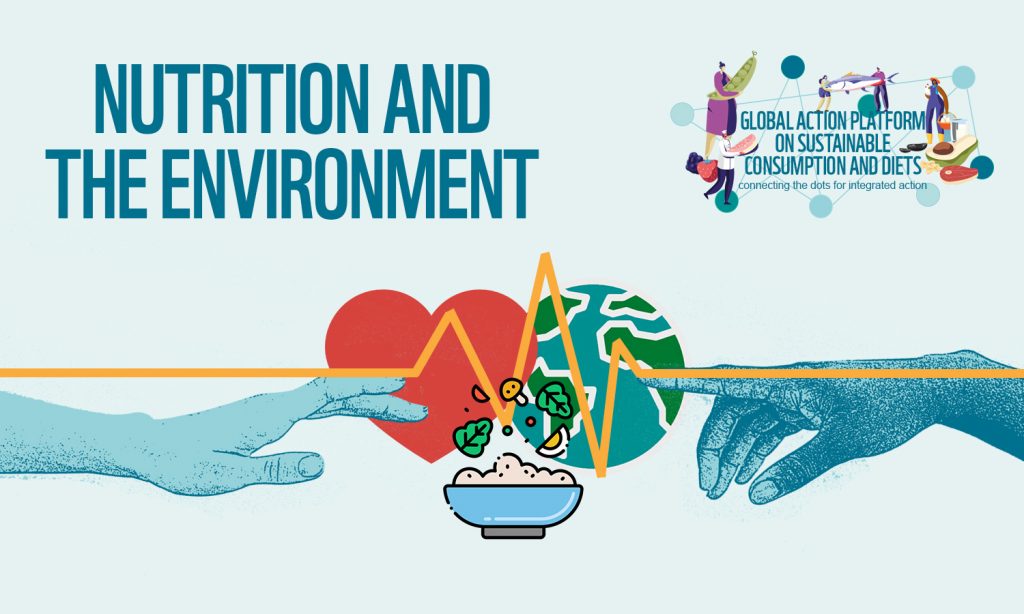Op-ed: Nutritionists and environmentalists must join hands to unlock the power of the plate
© UNICEF/Antoine Raab Op-ed by Stineke Oenema, Executive Secretary of UN Nutrition, Gunhild Stordalen, Founder and Executive Chair of EAT and SUN Lead Group member and, Joao Campari, Global Leader, Food Practice at WWF *Originally published by Food Thank in September 2021. Headlines during the…
 © UNICEF/Antoine Raab
© UNICEF/Antoine Raab
Op-ed by Stineke Oenema, Executive Secretary of UN Nutrition, Gunhild Stordalen, Founder and Executive Chair of EAT and SUN Lead Group member and, Joao Campari, Global Leader, Food Practice at WWF
*Originally published by Food Thank in September 2021.
Headlines during the COVID-19 pandemic have highlighted the vulnerability of our food system—far too many people continue to face food shortages or have not had the means to acquire healthy food. Never has food security been a more real concern for so many people. But behind the headlines, the problem is even more fundamental. There are 3 billion people unable to afford a healthy diet, while 2 billion people experience micronutrient deficiencies. Over 670 million adults are affected by obesity, with obesity also rising rapidly among children and adolescents. At the same time, over 150 million children under 5 years suffer from undernutrition, and every year 600 million people fall ill from unsafe food. If current trends continue, these statistics will only get worse.
Unhealthy diets, because of choice or lack of access, are a major driver of this health crisis. Every year, 11 million people die prematurely due to unhealthy diets. Obesity and diet-related diseases have turned out to be the most important risk factor, beyond age, for severe outcomes and death of COVID-19. We need urgent action to make healthy foods available, affordable, and accessible for all people. At the same time, we must ensure these foods come from nature-positive food systems. Currently, food systems are responsible for nearly a third of all global greenhouse gas (GHG) emissions—primarily the result of land-use change, unsustainable livestock farming and decomposing food that is lost or wasted. Unsustainable food production also causes large amounts of soil degradation (52 percent of all farmland is degraded), is the principal driver of global biodiversity loss, destabilizes river ecosystems—which we rely for nearly one third of our food—and increases the risk of zoonotic virus spillover.
Currently, the issues of food security and environmental sustainability are trapped in a vicious cycle: climate change, biodiversity loss and water shortages weaken our ability to produce food, while unsustainable means of increasing yields increase the speed and extent of environmental degradation.
Traditionally, diets have been the domain of nutritionists—and, to a certain extent, health professionals—but we must break traditional silos to have any chance of solving the interlinked issues of diets and environmental sustainability. Moving forward, diets must also be the concern of environmentalists, climate change activists, agriculturalists, politicians, investors, and businesses. For the same reason, the health of the natural world must become the concern of nutritionists.
The health of people and planet are deeply connected. Climate change will dramatically impact agricultural production around the globe. The land areas where most of our food is produced are warming more quickly than other parts of the world. More hot and dry days each year will shorten growing periods and lead to lower yields in some places. We are already seeing a net loss of top soil globally and a recent report estimated that about 21 percent of global food output growth has been lost to climate change since the 1960s. Though it is possible that other crops will flourish in new farming climates, it is likely that a decrease in yields of staple crops will lead to a decrease in overall food availability. Indeed, new research suggests that, overall, the risks are many times greater than the opportunities. Part of this problem stems from the fact that we rely on a very limited number of crops and animals for our food supply, which makes the food system less resilient to shocks from a changing climate. In contrast, more diverse production practices can lead to more diverse diets and a more resilient system.
Climate change is projected to not only impact crop yields in many areas, but also affect the nutritional quality of the food itself. A higher concentration of CO2 in the atmosphere can lead to a decreased density of nutrients in crops—including protein, nitrate, magnesium, zinc and iron.
Food production practices that drive nature loss and greenhouse gas emissions can also fuel malnutrition. In some low- and middle-income regions, many smallholder farmers have converted their subsistence farms to monoculture crops to increase income, but are then left without access to healthy, fresh food. This food is often too expensive to purchase in the local markets, so farmers are instead forced to purchase more affordable ultra-processed packaged foods, the overconsumption of which fuels malnutrition. This vicious cycle is fueled by perverse subsidies that incentivize individuals to take actions that are detrimental to both human and environmental health. It is time to repurpose these subsidies and reward farmers and fishers for producing healthy food with nature-positive practices.
In turn, monoculture production often takes place on deforested or converted land, resulting in a loss of biodiversity, requires more artificial inputs and degrades soils, and is less resilient than regenerative agriculture. In addition to limiting access to healthy foods for many local communities, the impacts on environmental health further impact human health. Adopting agroecological farming practices—farming with biodiversity—can break this cycle by restoring biodiversity and improving dietary diversity.
The ultimate solution is not to cure malnutrition and diet-related diseases, but rather to prevent their occurrence in the first place—by fundamentally re-thinking what food we consume and what methods we use to produce it. This requires nutrition and health professionals to collaborate with food producers and environmental professionals to ensure that a diversity of nutritious foods are produced in ways that support nature and within the carrying capacity of our ecosystems.
The right policies can drive action. Consumer demand has the power to influence producers, retailers and restauranteurs towards the systemic transformation we need, with healthier, more sustainably sourced foods promoted and priced attractively. But consumers don’t operate in a vacuum. Governments and political leaders have a key responsibility to help create the enabling conditions for lasting and meaningful change.
Governments can adopt true cost accounting and implement policies that favor healthy sustainable diets over less healthy and unsustainably produced foods. They can incentivize farming systems that show measured increases in ecosystem health They can direct or stimulate businesses to limit marketing of unhealthy products and revamp dietary guidance to include considerations of climate and environmental health. They can align relevant public policies, from agricultural subsidies to public procurement. And finally, they can mandate food loss and waste measurement across the supply chain, with stipulations that edible food must be redirected to those who need it.
Most importantly, governments can formally integrate food, health, nature and climate agendas, creating global, national and city-level pathways with clear science-based targets, and measurement frameworks for those responsible in delivering the targets. Steps were taken to advance this thinking at the UN Food Systems Summit (UNFSS) in September 2021 and the coalitions which were established within the five Action Tracks provide valuable spaces for diverse stakeholders to collaborate and develop plans for systemic transformation.
The Coalition on Healthy Diets from Sustainable Food Systems for All is one coalition that emerged from the UNFSS. It seeks to halve the number of people who cannot afford a healthy diet, while working to ensure this food is sustainably produced (within safe environmental limits/planetary boundaries). This global coalition is working hard to break traditional silos between nutritionists and environmentalists to achieve a shared vision. We need to ensure that the other global coalitions emerging from the summit are also doing the same.
As we move forward, these agendas must be more deeply integrated and addressed with urgency. Actors across the food system should participate keenly in the upcoming UN biodiversity (UNCBD COP15) and climate (UNFCCC COP26) conferences. Targets which concurrently tackle all forms of malnutrition and nature loss or climate change should be included in the Global Biodiversity Framework and the Nationally Determined Contributions to the Paris Agreement as a high priority. Nutrition scientists need to advocate for sustainable food systems. Likewise, climate and biodiversity professionals and activists need to follow the discussions on food security (CFS49) and nutrition (Tokyo Nutrition for Growth Summit). Only by breaking silos can we stand any chance of integrating these critically important agendas and chart a viable path toward a world of healthy people on a healthy planet. Growing numbers of people around the world sense that the old, siloed approaches and answers fall short. They are desperate for better ideas and more credible answers to the challenges we face.
By joining together, nutritionists and environmentalists can provide many of those answers, pointing us towards a healthy, food-secure, just world that supports thriving biodiversity and a stable climate. Isn’t that the world we want?
*This is the third piece in a series produced by the Global Action Platform on Sustainable Consumption and Diets. Read parts one and two, and learn more by visiting their webpage here.
